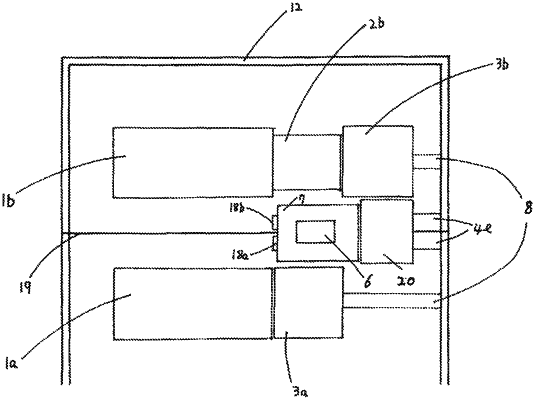| CPC E05B 65/0075 (2013.01) [E05B 63/00 (2013.01); E05B 63/14 (2013.01); E05B 65/52 (2013.01); E05B 67/063 (2013.01); E05C 9/10 (2013.01); E05C 19/007 (2013.01); E05G 1/00 (2013.01); E05G 1/026 (2013.01); E05G 1/04 (2013.01)] | 11 Claims |

|
1. A lock system comprising end surfaces, disposed at a point at which a body and a door capable of being opened and shut freely abut against each other, the lock system comprising:
a pair of locking/unlocking operating members, each of which is configured to take of two different states that are a lock state and an unlock state,
a common fastening member that is configured to slide between the pair of locking/unlocking operating members, and to take one of two different positions that are a locking position and an unlocking position wherein the door is able to open when the common fastening member is at the unlocking position, and the door is not able to open when the common fastening member is at the locking position,
a pair of stopping members, each of which is configured to take of two different states that are a lock state and an unlock state, and each of which is capable of
stopping the common fastening member forcibly at the lock position when at the lock state, and
allowing the common fastening member to slide to the unlock position from the lock position when at the unlock state; wherein
when any one of the locking/unlocking operating members is stuck at the lock state, which is defined as a lock stuck member, such that the common fastening member does not move toward the lock stuck member, the other of the locking/unlocking operating members, which is defined as a unlock member, takes the unlock state to allow the common fastening member to slide toward the unlock member such that the common fastening member takes the unlock position, making the door able to open with respect to the body,
when any one of the locking/unlocking operating members is stuck at the unlock state, which is defined as an unlock stuck member, such that the common fastening member freely slides between the lock position and the unlock position, one or both of the stopping members take the lock state to prevent the common fastening member from sliding toward the unlock stuck member, making the door locked with respect to the body.
|